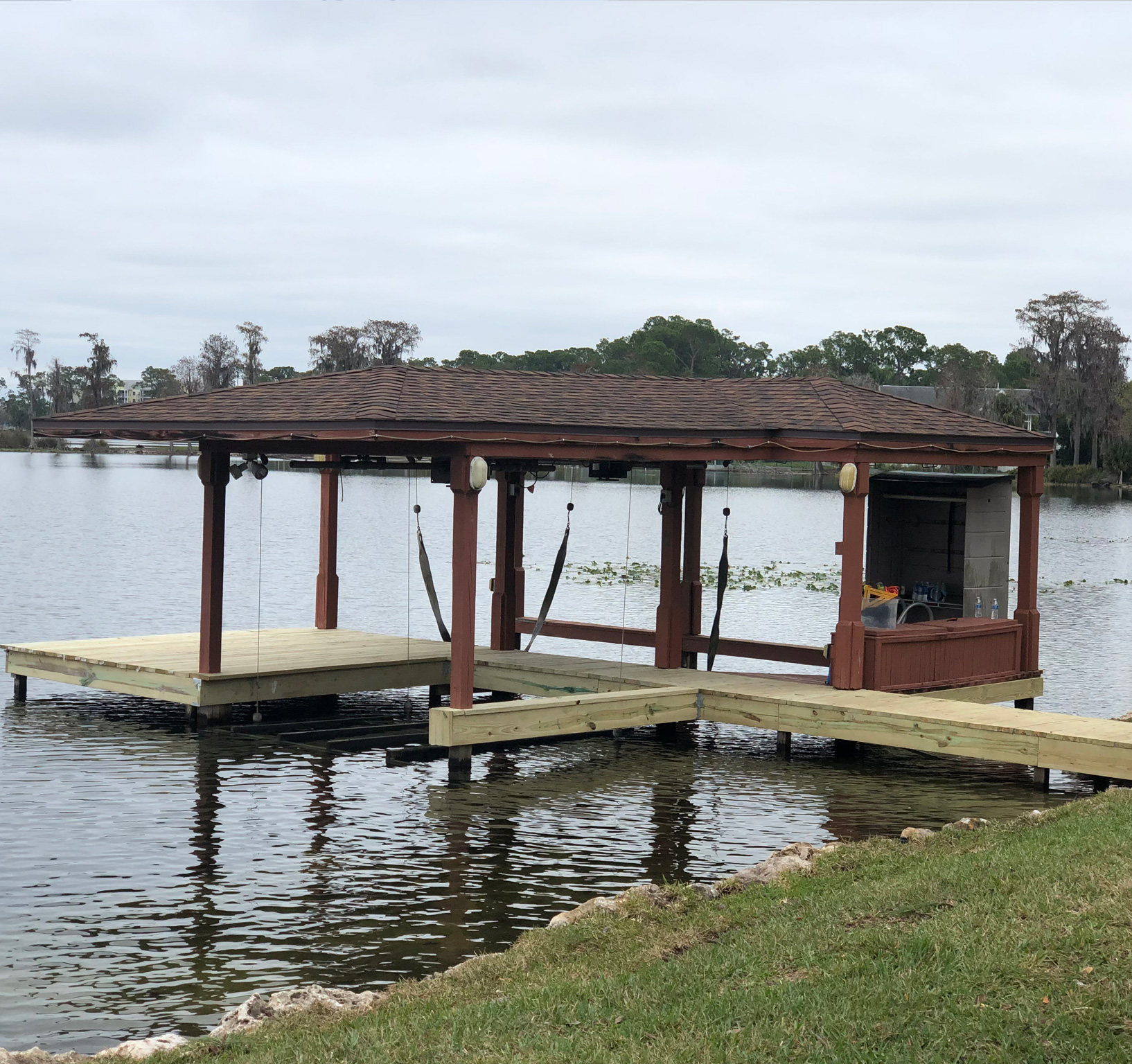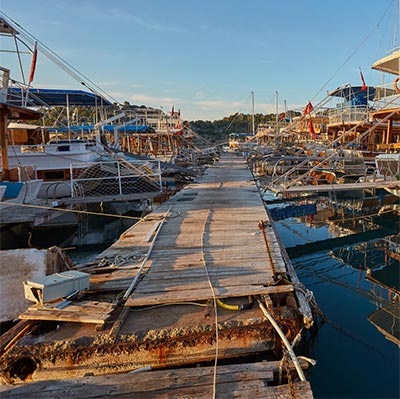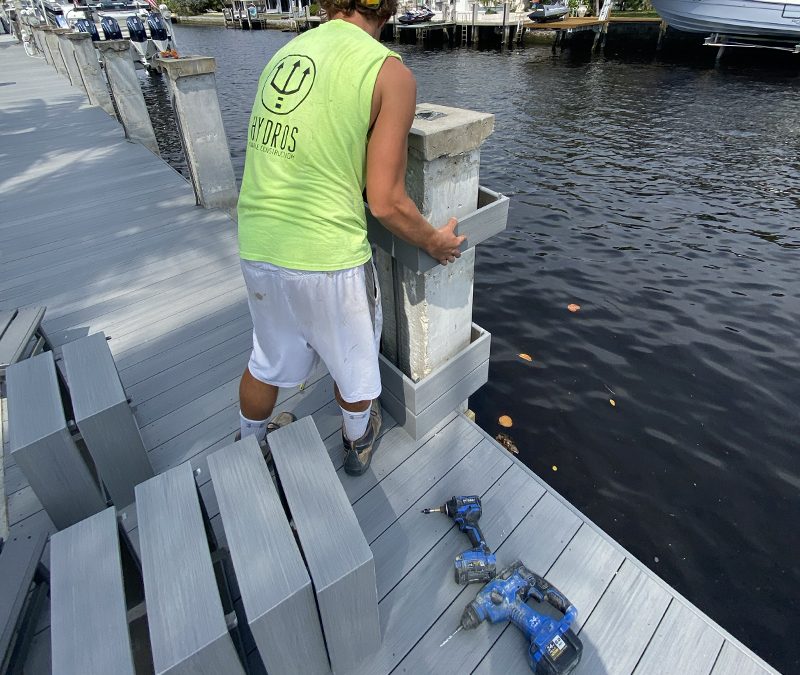Seasonal Preparations: When to Schedule Your Dock Repairs
Seasonal Preparations: When to Schedule Your Dock Repairs
Blog Article
Effective Dock Repair Work Techniques: Making Sure Architectural Integrity
Guaranteeing the structural stability of docks with effective repair work techniques is critical for the longevity and safety of aquatic centers. Consequently, picking the ideal repair work products, such as composite products and corrosion-resistant alloys, is important for durability.
Examining Dock Damage
Evaluating dock damages is an important initial step in making sure the structural stability and safety and security of any docking center. This preliminary evaluation includes a comprehensive assessment to recognize both covert and noticeable damages. Key elements to examine include the dock's structure, pilings, decking, and hardware. Each part needs to be scrutinized for indicators of wear, rot, corrosion, or various other forms of destruction that can compromise the structural stability.
Structural engineers or qualified examiners normally execute these assessments utilizing specialized tools and methods. As an example, undersea examinations might employ sonar devices or remotely operated automobiles (ROVs) to identify immersed damages. Over water, aesthetic assessments are matched by using moisture meters and various other analysis devices to reveal underlying issues not immediately noticeable to the nude eye.

Choosing Repair Service Materials
Selecting the appropriate repair products is a crucial action in the dock remediation procedure, one that straight influences the long life and efficiency of the fixed structure. Product choice should be driven by factors such as ecological conditions, load-bearing requirements, and compatibility with existing dock parts.
In addition to timber, composite materials are increasingly prominent due to their sturdiness and low upkeep demands. Compounds, usually made from a blend of plastic and wood fibers, offer superb resistance to rot, bugs, and UV damages. For steel docks, selecting corrosion-resistant alloys such as galvanized steel or marine-grade aluminum is important to avoid corrosion and guarantee architectural stability in saline water problems.
Epoxy materials and marine-grade sealants are vital for fixing cracks and sealing joints, supplying a water-proof barrier and enhancing the dock's general stamina. By thoroughly choosing top quality products, dock repair work can accomplish durable results, therefore safeguarding versus future deterioration and guaranteeing secure, reliable use.
Architectural Reinforcement Strategies
Reliable architectural reinforcement methods are essential in making certain the security and long life of dock repair work. This approach is especially reliable for anchors exposed to hefty tons or severe environmental conditions.
An additional important method is the application of fiber-reinforced polymers (FRP) These materials offer high strength-to-weight ratios and exceptional resistance to corrosion, making them optimal for reinforcing concrete or wood docks. FRP can be applied in sheets or strips and bound with epoxy resins to boost structural integrity.
Bracing and securing systems also play an essential duty in architectural reinforcement. Cross-bracing, making use of metal or wood beams, can neutralize lateral pressures, decreasing guiding and movement. Anchoring systems, such as helical piers or driven piles, supply a stable structure by transferring lots to deeper, more secure soil layers.
Last but not least, the combination of load-distribution plates can help disperse weight more uniformly across the dock's surface area, mitigating local tension factors. These techniques jointly guarantee that anchors remain durable and secure, capable of withstanding the rigors of their functional atmosphere.
Advanced Fixing Techniques

Another advanced technique involves underwater welding, which allows for repairs to be conducted without the need to dewater the location. This approach is specifically useful for addressing structural issues in submerged dock components, ensuring minimal disruption to procedures. Boosted welding methods, combined with robotic systems, supply accuracy and dependability, consequently extending the life-span of the dock.
In addition, cathodic protection systems are executed to avoid rust in metal dock structures. By using sacrificial you can look here anodes or satisfied existing systems, these methods effectively mitigate the electrochemical procedures that result in material deterioration.
Last but not least, progressed surveillance technologies, such as architectural wellness monitoring (SHM) systems, offer real-time data on the problem of dock structures. These systems make it possible for positive maintenance and prompt interventions, inevitably making sure the long-term architectural integrity of the dock.
Maintenance and Avoidance
Maintenance and avoidance are fundamental principles that underpin the longevity and safety and security of dock structures. Routine evaluations are extremely important, enabling for very early detection of damage, potential weak points, and ecological effects. An aggressive method, entailing regular checks for corrosion, rot, and architectural shifts, alleviates costly repair services and lengthens the dock's operational life.
Safety nets need to consist of applying safety coverings to metal parts to defend against corrosion and making use of treated timber to stand up to degeneration. Additionally, guaranteeing correct water drainage and ventilation can avoid water buildup, which is a common you can try these out root cause of architectural destruction. Including quality materials and sticking to maker standards throughout construction and repair stages additionally play crucial roles in improving longevity.

Educating employees in dock maintenance best practices makes certain regular application of preventative procedures. Leveraging technological advancements, such as drones for inspections and sensing units for real-time tracking, can even more boost upkeep efforts. By prioritizing upkeep and prevention, dock owners can ensure architectural stability, operational safety and security, and cost-efficient administration over the dock's lifespan.
Conclusion
In final thought, keeping the structural integrity of aquatic centers necessitates extensive dock repair service strategies. Advanced repair work strategies, coupled with routine upkeep practices, make sure the dock stays functional and safe under diverse ecological problems.
Ensuring the structural integrity of docks with reliable repair methods is vital for the long websites life and safety and security of marine facilities.Selecting the suitable repair work materials is a critical step in the dock remediation procedure, one that directly influences the longevity and performance of the repaired structure.Effective architectural support methods are essential in making certain the security and durability of dock repair services. By prioritizing maintenance and prevention, dock owners can ensure structural integrity, functional safety and security, and cost-efficient monitoring over the dock's life-span.
In verdict, maintaining the architectural stability of marine facilities demands thorough dock repair service techniques.
Report this page